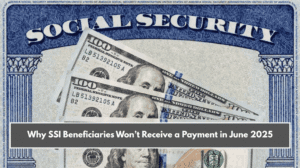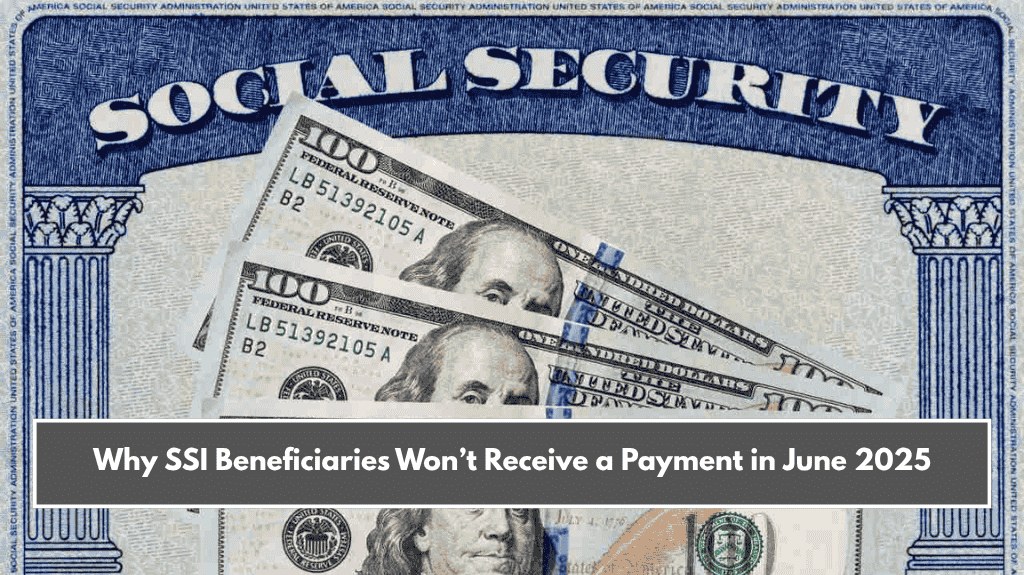Disabled workers receiving Social Security Disability Insurance (SSDI) will see an average monthly payment of $1,580 in April 2025, thanks to a 2.5% Cost-of-Living Adjustment (COLA). Along with this, the recent removal of two rules — the Windfall Elimination Provision (WEP) and Government Pension Offset (GPO) — through the Social Security Fairness Act brings even more financial relief to many Americans.
Let’s break down what this means for you, who qualifies, and how to make the most of these benefits.
SSDI Payments in 2025: What Has Changed?
The 2.5% COLA increase helps SSDI beneficiaries keep up with the rising cost of food, rent, medicines, and other essentials. This means someone who was receiving $1,540 per month in 2024 now receives around $1,580 in 2025.
These benefits are important for those who can no longer work due to a disability. SSDI is funded by payroll taxes and provides a stable monthly income for eligible workers.
SSDI Payment Dates in April 2025
SSDI payments are sent out based on your birthdate and the date you first started receiving benefits:
April 3 – For people who started receiving SSDI before May 1997
April 9 – For people born between the 1st and 10th
April 16 – For those born between the 11th and 20th
April 23 – For those born between the 21st and 31st
Payments are sent via direct deposit or through the Direct Express debit card for those without a bank account.
WEP and GPO Repealed: What This Means
In January 2025, the Social Security Fairness Act was signed into law. It removed WEP and GPO, which had reduced Social Security payments for people like teachers, police, and other public service workers.
Before:
- WEP lowered SSDI for people with non-Social Security pensions.
- GPO reduced spousal and survivor benefits.
Now:
- These cuts have been removed.
- Many will see an extra $360 per month, some even up to $1,200 more.
- Some are receiving lump sum payments averaging $6,710, backdated to January 2024.
No need to apply separately — the SSA is updating your benefits automatically.

What Is SSDI and Why Is COLA Important?
SSDI is for people who cannot work due to a serious health condition. It’s a part of the Social Security system and gives monthly payments after you’ve paid into the system through your job.
COLA (Cost-of-Living Adjustment) is reviewed every year by the Social Security Administration (SSA) to help benefits match inflation. Since prices keep going up, COLA ensures your payments don’t lose value.
Tips for SSDI Beneficiaries
Here’s how you can manage your benefits better:
Check Your SSA Account – Keep an eye on your payment details and updates
Keep Info Updated – Ensure your phone, bank, and mailing info is correct
Use Direct Deposit – It’s faster and safer than checks
Know the Tax Rules – Some people may need to pay tax on SSDI
Stay Within Income Limits – Earning too much from other work can affect your benefits
Mistakes to Avoid
- Missing SSA Deadlines – Always reply quickly if SSA asks for documents
- Not Reporting Changes – Inform SSA if your income or health changes
- Earning Above Limits – If your income goes beyond $1,620/month (non-blind) or $2,700/month (blind), your benefits could stop
What’s Next for SSDI and COLA?
Experts believe future COLA increases might stay small if inflation stays low. Still, the changes in 2025 are some of the most helpful in years. More efforts are being made to improve Social Security fairness, especially for those who depend on these payments the most.
In April 2025, SSDI recipients will get an average of $1,580, thanks to the new COLA increase and the end of WEP and GPO rules. These updates bring major financial relief to millions. Many will also receive back payments from January 2024, helping cover past expenses.
Whether you’re already receiving SSDI or planning to apply, staying updated with changes like these can help you get the most out of your benefits. Social Security is becoming more helpful, and it’s good news for disabled workers across the country.















